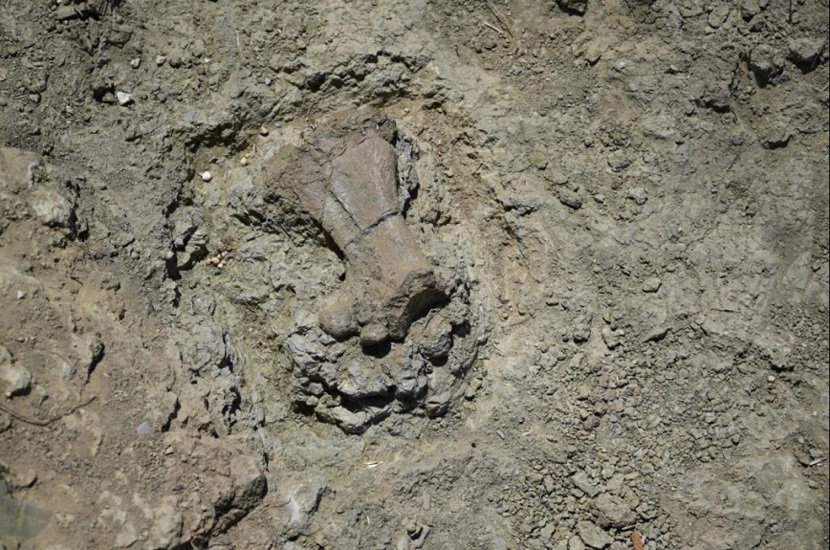
Archaeologists recently discovered ancient pygmy hippo fossils on the island of Crete which date back to 350,000 B.C.
The find was made at Katharo Plateau on the Dikti mountain in the east of the island by paleontologists from the University of Athens last week.
It marks the first time such a “high concentration of pygmy hippopotamus fossils” has been found in Greece. Paleontologist Giorgos Lyras, who worked on the excavation, told AFP that it was a “significant discovery.”
The pygmy hippopotamus, or pygmy hippo, is a small member of the hippopotamid family. Nowadays, the animals are native to West Africa, living in swamps and forests.
Katharo Plateau lies at an elevation some 3,600 feet above sea level. Fossils are often discovered in such high places, where centuries of soil and sediment cover the bones and eventually bury them.

More hippo fossils finds are expected on Crete
We expect to find an even greater number of hippopotamus fossils,” Lyras told AFP.
Other animals have been unearthed on Crete and the other Greek islands. Dwarf elephants were found to have lived in the Aegean islands, including Naxos and Rhodes. Fossils like these can inform researchers about the ecosystems existing thousands of years ago.
In June several paleolithic sites dating from 700 thousand years ago have been discovered during excavations at the Megalopolis lignite mine, in Arcadia, southern Greece.
According to a statement by the Greek Ministry of Culture the sites “offer a unique opportunity to investigate human behavior over time, for an important period in the history of human evolution and in an area that has so far been little investigated.”
Hippo fossils discovered on mainland Greece
The oldest location identified is Kyparissia 4, which dates back to about 700 thousand years ago and is located about 70 meters below the surface.
The site contains Paleolithic stone artifacts, along with the remains of extinct animals such as giant deer (Praemegaceros), hippopotamus, rhinoceros, elephant, and a tooth of the macaque monkey.
The “younger” nearby site Kyparissia 3 yielded mainly elephant bones associated with stone tools. At the Marathousa 2 site, which dates back to about 450 thousand years ago, a part of a hippopotamus skeleton with cut marks was found together with the remains of stone tools, and is a rare example of hippopotamus exploitation in Pleistocene Europe.
The preliminary study of the paleoenvironmental and paleoclimatic indicators shows that all the sites have been found in ice age environments, and in fact, they are located chronologically in almost all the ice ages of the Middle Pleistocene.
These findings indicate that the Megalopolis basin formed one of the southernmost ecological refuges in Europe during the glacial periods, the Greek Ministry says.
Related: The Prehistoric ‘Human Skull’ Cave of Greece
See all the latest news from Greece and the world at Greekreporter.com. Contact our newsroom to report an update or send your story, photos and videos. Follow GR on Google News and subscribe here to our daily email!



